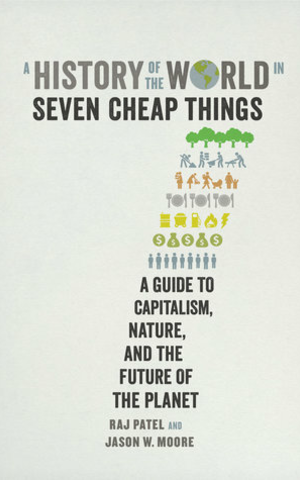Environmental science
No followers
Most recommended content
See AllFeatured creators
See AllAn independent sociologist and writer, Valerie Kuletz holds a PhD in environmental sociology from the University of California-Santa Cruz. She was Associate Professor of American Studies at the University of Canterbury in New Zealand, has been Visiting Scholar in Geography at UC Berkeley and Visiting Associate Professor in History at University of New Mexico. Her publications include "The Tainted Desert" (Routledge, 1998), as well as numerous essays in contributed volumes. She is currently finishing a paper on the legacy of nuclear weapons testing in the United States, to be published by Oregon State University Press. She lives with her husband in the San Francisco Bay Area.
Dr. Éloi Laurent is a senior economist at OFCE, professor at Ponts Paris Tech, at the Paris School of International Affairs (PSIA) at Sciences Po and visiting professor at Stanford University (Paris and Stanford). Macro-economist by training (PhD), he graduated from Paris-Dauphine and Sciences Po.
His work focuses on the relationship between well-being and sustainability through the social-ecological approach, in particular the exploration of the sustainability-justice nexus and planetary health-human health nexus (“full health nexus”). He is the author or editor of twenty books in French and English (translated into nine languages), three governmental reports and around a hundred articles published in French and international journals. He was parliamentary attaché to the National Assembly and assistant in the cabinet of the French Prime Minister. He has been a Visiting Scholar at New York University (NYU) and Columbia University, Visiting Professor at the University of Montreal, and Visiting Scholar and Professor at Harvard University. He is Research Fellow at the Well-being Economy Alliance (WeALL), qualified expert for European institutions and chairman of the SHS 5 (economics and law) and Foresight (sustainable development) Commissions of the Scientific Research Fund, FRS- FNRS (Belgium).
British Indian academic, journalist, activist, and writer. Known as "the rock star of social justice writing."
Jason W. Moore is an environmental historian and historical geographer at Binghamton University, where he is professor of sociology. He is author or editor, most recently, of Capitalism in the Web of Life (Verso, 2015), Capitalocene o Antropocene? (Ombre Corte, 2017), Anthropocene or Capitalocene? Nature, History, and the Crisis of Capitalism (PM Press, 2016), and, with Raj Patel, A History of the World in Seven Cheap Things (University of California Press, 2017). His books and essays on environmental history, capitalism, and social theory have been widely recognized, including the Alice Hamilton Prize of the American Society for Environmental History (2003), the Distinguished Scholarship Award of the Section on the Political Economy of the World-System (American Sociological Association, 2002 for articles, and 2015 for Web of Life), and the Byres and Bernstein Prize in Agrarian Change (2011). He coordinates the World-Ecology Research Network. He can be reached at: jwmoore@binghamton.edu.
Writer, filmmaker, teacher; historian of science, medicine, and the environment. Author of Empire of Rubber (Oct. 2021)
Professor in women's studies and the history of science. First tenured professor in feminist theory in the United States. Contributions to the study of human-machine and human-animal relations. Award-winning author of "Modest_Witness" and "Primate Visions".





